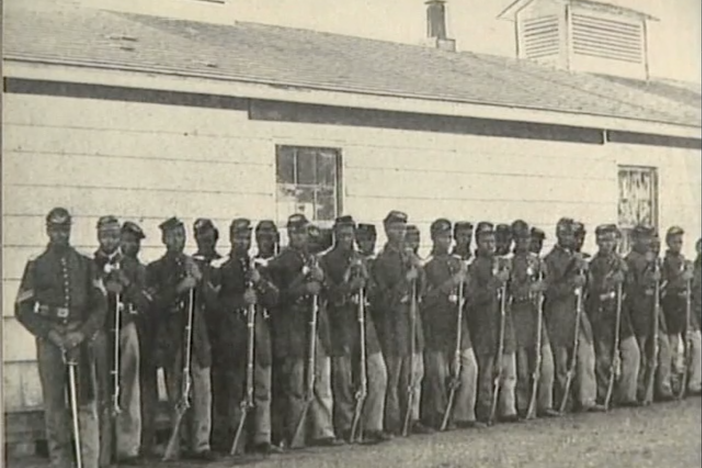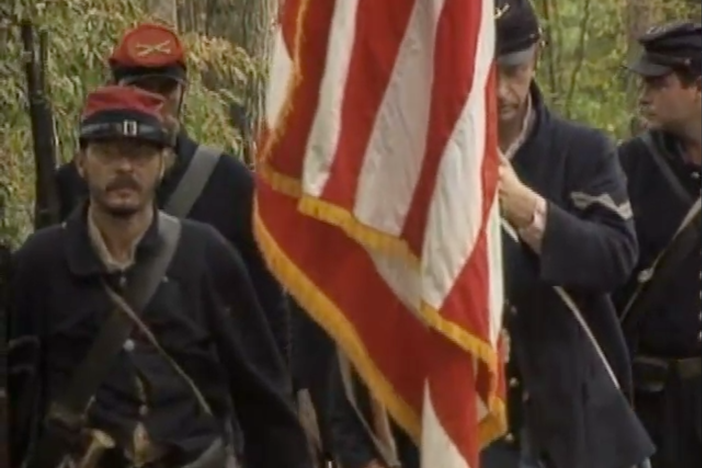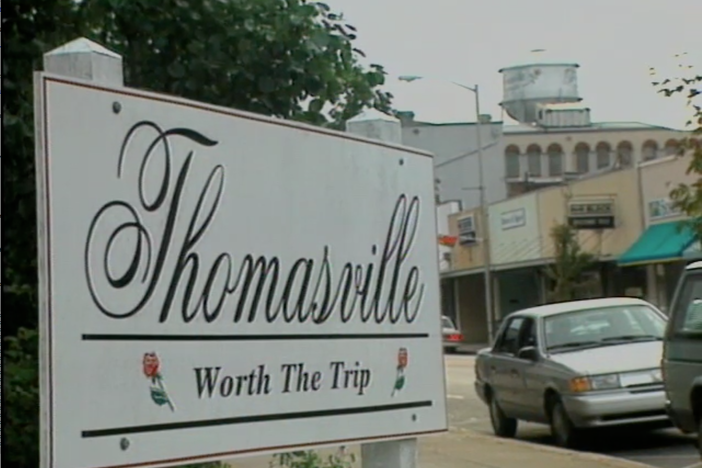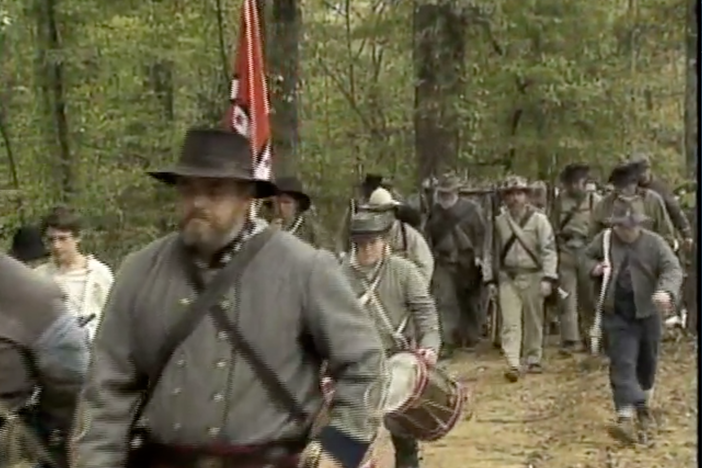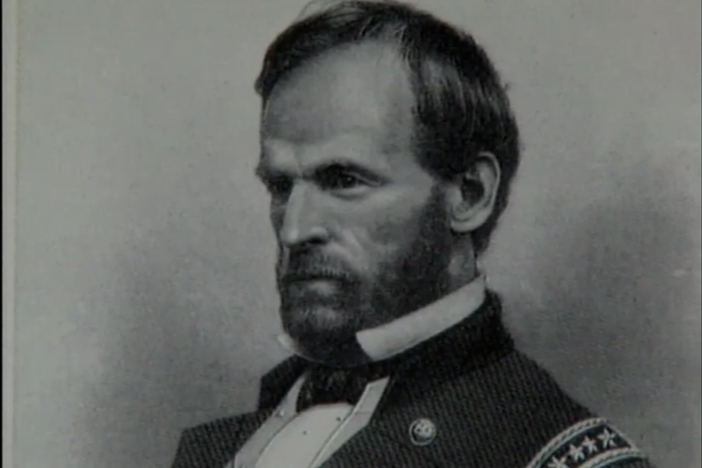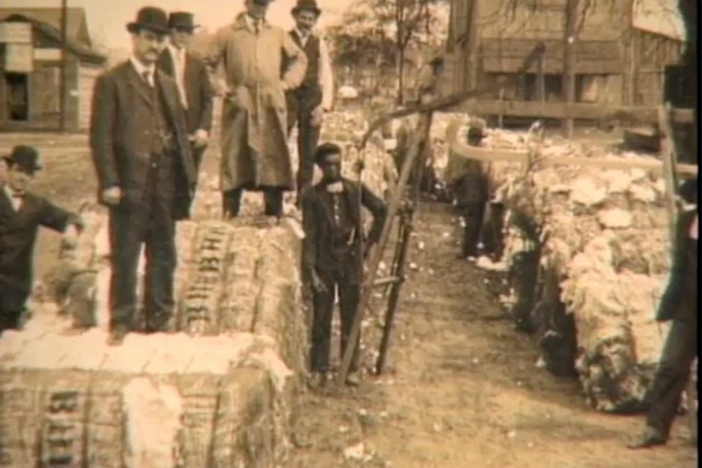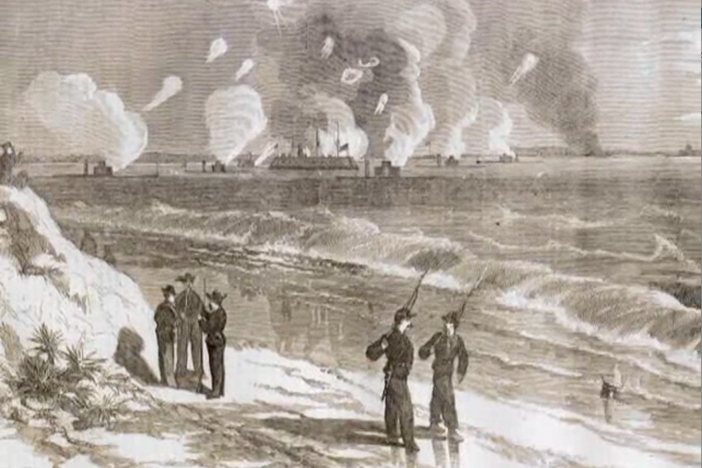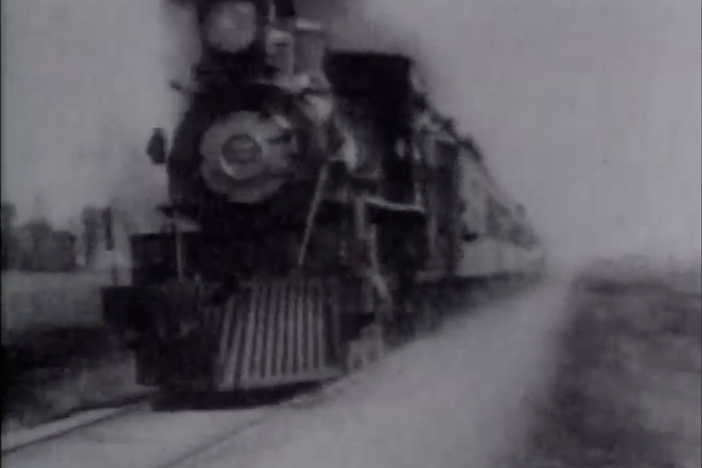The War Between the States Reimagined as a Railroad War
John Gilbert takes students on a tour of the Big Shanty Museum (now renamed The Southern Museum of Civil War and Locomotive History) and reveals that the Civil War was known as the railroad war because battles were fought up and down the rail lines. Dr. Gene Hatfield, a historian, recounts how repairing destroyed railroad tracks was mostly done by African American men. Folklorist Maggie Holtzberg explains the rhythmic singing and movements they used to move heavy track. Lesa Campbell of the Southern Railway Museum discusses how travel and transport has changed over time.
The War Between the States Reimagined as a Railroad War
John Gilbert takes students on a tour of the Big Shanty Museum (now renamed The Southern Museum of Civil War and Locomotive History) and reveals that the Civil War was known as the railroad war because battles were fought up and down the rail lines. Dr. Gene Hatfield, a historian, recounts how repairing destroyed railroad tracks was mostly done by African American men. Folklorist Maggie Holtzberg explains the rhythmic singing and movements they used to move heavy track. Lesa Campbell of the Southern Railway Museum discusses how travel and transport has changed over time.
Social Studies
Evaluate the ways in which the Interstate Highway System, Hartsfield-Jackson International Airport, deepwater ports, and railroads interact to support the exchange of goods and services domestically and internationally.
Explain how technological developments, including the cotton gin and railroads, had an impact on Georgia's growth.
Explain Georgia's role in the Civil War; include the Union blockade of Georgia's coast, the Emancipation Proclamation, Chickamauga, Sherman's Atlanta Campaign, Sherman's March to the Sea, and Andersonville.
1. What economic role do trains play in Georgia?
2. Using a railroad map and a road map of Georgia, locate the placement of the main interstates in Georgia in comparison with the location of the railroads. Discuss why it would be logical to place highways along these lines rather than finding new ways through the state. Why do the roads and railroads not match at certain places?
3. Explain why the legislature of Georgia needed to begin to regulate freight and passenger rates for the railroads. What happened in 1887 that made Georgia know that this action would hold up in court (be legal)?
1. With a marker, trace rail lines on a Georgia highway map to more easily see the number of rail lines in use today. Discuss the importance of railroads as part of Georgia’s transportation system and the effect the railroad has on the economy.
2. Write a story with pictures or in comic book form of the history of Atlanta’s three names: Terminus, Marthasville, and Atlanta. Make sure that the railroad is a central “character” in these changes.
Terminus: the name given to the plot of land owned by the railroad (Western & Atlantic) at its end point in Georgia; first name of the later city of Atlanta
gauge: the distance between the inner edges of the heads of the rails in a track (usually 4 ft. 8.5 in.)
Sherman’s neckties: railroad ties whose centers were heated over a fire and then twisted around a tree stump so that they were rendered useless (used by Sherman’s army so that the Confederates could not easily rebuild their railroad tracks)
bond: a legal agreement made by a government to borrow money
deduction: an amount that is taken away
dividend: a profit that is shared or divided among stockholders
interest: the amount of extra money that is paid on a loan; a premium for use borrowed money
lease: to rent for a specific amount of time
proxy: a person who is authorized to speak or vote for another
revenue: Money that is placed in a government treasury for beneficial public use
share: an equal part of property or invested capital
stockholder: a person who owns one or more shares of a company
1. What economic role do trains play in Georgia?
Trains allow for the distribution of Georgian goods to the rest of the country and offer a way to import goods into the state. During the 1800s, rail offered a cheaper, faster and more direct option than rivers and other transportation systems.
2. Using a railroad map and a road map of Georgia, locate the placement of the main interstates in Georgia in comparison with the location of the railroads. Discuss why it would be logical to place highways along these lines rather than finding new ways through the state. Why do the roads and railroads not match at certain places?
Most of the north/south rail lines are along the same route as I-75 and I-85 are today; Interstate 20 runs roughly just above the fall line through Augusta into South Carolina. There are other major Georgia state highways that run along the other railroad routes on the map. It was logical to run the roads along the same route because of Georgia’s geography. The railroad beds are usually laid on flat land that mostly runs straight. To have to decide on other routes would have been costly. In addition, many towns and cities had already grown up along the rail line, and roads would definitely be used between these towns and cities if they were built. Certain rail lines run through unlivable areas and connect to other railroads across state lines. This is why some roads were not built along these lines.
3. Explain why the legislature of Georgia needed to begin to regulate freight and passenger rates for the railroads. What happened in 1887 that made Georgia know that this action would hold up in court (be legal)?
The railroads had taken over the maintenance of the roads following the Civil War. As a result, they were charging exorbitant fees (tolls) to the users of these roads. In 1879, the legislature passed a law to regulate the “freight and passenger tariffs” for both freight and passengers on Georgia roads and railroads. They appointed three
commissioners to decide on fair rates that could be charged. In 1887, a Supreme Court decision decided for the Commission: they could decide what rates could be charged for freight and passengers on Georgia’s roads and railroads.
